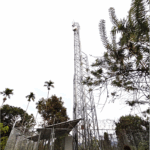Dr WEI Bo, Medical Ph.D. & M.D. Associate Chief Physician Senior cardiologist, Department of Cardiology Affiliated Hospital of Guizhou Medical University (GMU)
HIGH blood pressure has become a prevalent health concern worldwide. However, identifying this silent issue can be challenging. Let’s explore how we can recognize it.
According to the International Society of Hypertension, high blood pressure is defined as a systolic blood pressure (BP) reading of 140 mmHg or higher and/or a diastolic blood pressure of 90 mmHg or higher in clinical settings. Diagnosis typically involves monitoring BP on multiple occasions over several days, with patients advised to check their BP 2 to 3 times every 1 to 4 weeks. Therefore, a single BP reading is insufficient for diagnosing hypertension. Blood pressure is measured in millimeters of mercury (mm Hg), and generally, a normal BP is below 130/80 mm Hg.
There are two sets of diagnostic criteria for hypertension:
Figure 1: Four general categories of clinic BP
| Categories | SBP (mmHg) | DBP (mmHg) |
| Normal blood pressure | <130 and | <80 |
| Elevated blood pressure | 130-139 and/or | 85-89 |
| Stage 1 hypertension | 140-159 and/or | 90-99 |
| Stage 1 hypertension | ≥160 and/or | ≥100 |
Figure 2: Hypertension criteria for clinic BP, ambulatory BP and home BP
| (mmHg) | SBP /DBP (mmHg) | |
| Clinical BP | ≥140 and/or≥90 | |
| Ambulatory BP | 24-hour average | ≥130 and/or≥80 |
| Daytime (or waking state) average | ≥135 and/or≥85 | |
| Night (or sleep state) average | ≥120 and/or≥70 | |
| Home BP | ≥135 and/or≥85 |
When measuring clinic BP, it’s advisable to measure the BP in both arms simultaneously. If the BP difference between arms consistently exceeds 10 mmHg after multiple measurements, the arm with the higher BP should be used for measurement. However, for most individuals, hypertension diagnosis still requires confirmation through out-of-clinic BP monitoring.
Compared to clinic BP measurements, out-of-office BP measurements, including ambulatory BP monitoring (ABPM) and home BP monitoring (HBPM), are more reliable and can differentiate between white coat hypertension and masked hypertension:
White coat hypertension: Elevated clinic BP with normal out-of-clinic BP in individuals not on antihypertensive therapy. In treated patients, this is referred to as the white-coat effect.
Masked hypertension: Normal clinic BP (typically below 140/90 mmHg) but elevated average daytime BP during self-monitoring, ABPM, or HBPM (≥135/85 mmHg).
In conclusion, the aforementioned BP criteria are applicable to all adults (age >18). However, they serve as guidelines, and specific diagnosis and treatment decisions should be made by a healthcare professional based on individual circumstances.
If you have concerns about hypertension, please consult a medical professional for accurate diagnosis and treatment recommendations. Stay tuned for more insights into hypertension treatment.
CHINA MEDICAL TEAM














